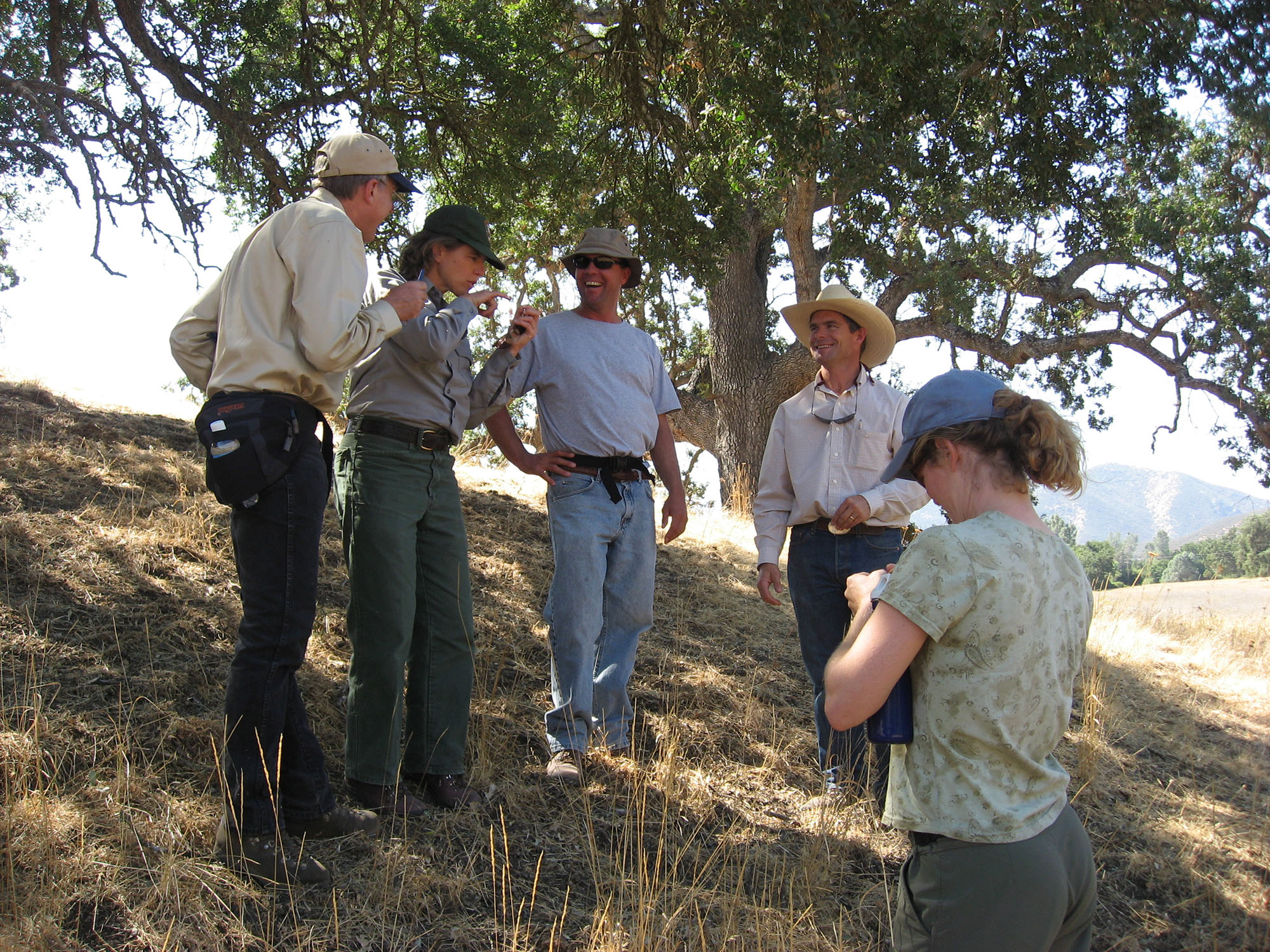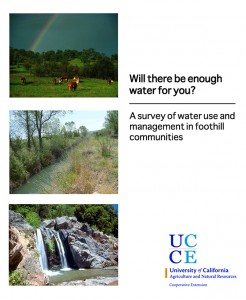 The rangelands of California produce abundant ecosystem services. Our papers are a progression from early work about the importance of considering the human role in landscape conservation, to today’s effort to analyze and document the values of what have come to be known as “working landscapes.” The people who ranch and steward these landscapes are the key to maintaining the quality of life in California for future generations. They are part of the production of rangeland ecosystem services, and their choices and opportunities are important to all of us.
The rangelands of California produce abundant ecosystem services. Our papers are a progression from early work about the importance of considering the human role in landscape conservation, to today’s effort to analyze and document the values of what have come to be known as “working landscapes.” The people who ranch and steward these landscapes are the key to maintaining the quality of life in California for future generations. They are part of the production of rangeland ecosystem services, and their choices and opportunities are important to all of us.
Our new paper in PLoS ONE is a meta analysis of the effects of land abandonment in Europe, where the migration of people from rural to urban areas has led to the cessation of traditional agriculture in some areas. While species richness and abundance increased after abandonment in general, in pastures, it decreased after livestock grazing stopped: http://www.plosone.org/article/info%3Adoi%2F10.1371%2Fjournal.pone.0098355
Our recent paper in Ecology and Society explains how ranchers are an integral part of ecosystem services: Ecosystem services are social ecological services in a traditional pastoral system: The case in California Mediterranean rangelands at multiple scales: http://www.ecologyandsociety.org/vol19/iss1/art8/
In 2013 we published a paper on the ecology of carbon sequestration on arid lands: What can ecological science tell us about opportunities for carbon sequestration on rangelands? in Global Environmental Change. Recently, we produced a series of papers resulting from a survey of California forest and range landowners for lab alumna Shasta Ferranto’s dissertation. Here is an overview of the results from California Agriculture: CAL. Visiting scholar Tobias Plieninger took the data and analyzed it to look at ecosystem services: Plieninger ecosystem services. Shasta wrote a paper focused on how people respond to different information sources about natural resources: media.
 January 2014: We are continuing a survey of landowners in Yuba and Nevada counties, looking at water abundance and price and how that will affect land use and landscapes in the foothills. Soon those who have not yet returned the survey will receive another, in case the first was lost. With the terrible drought, the study is even more relevant. The unique water transport systems of the northwestern foothills, dating from the Gold Rush, and the way water flows through the hills, results in seeps, springs, tailwater runoff, canal leaks and pipe leaks that create small habitats and recycle water naturally: water used lower down in the hills may have come from someone’s irrigation system at higher elevations. As water prices rise and there is increasing pressure to save water, what will happen to these systems? We are hoping that landowners will tell us how they might respond to changes in water prices and availability. This project is part of the National Science Foundation sponsored study, “Wetlands in a Working Landscape.”
January 2014: We are continuing a survey of landowners in Yuba and Nevada counties, looking at water abundance and price and how that will affect land use and landscapes in the foothills. Soon those who have not yet returned the survey will receive another, in case the first was lost. With the terrible drought, the study is even more relevant. The unique water transport systems of the northwestern foothills, dating from the Gold Rush, and the way water flows through the hills, results in seeps, springs, tailwater runoff, canal leaks and pipe leaks that create small habitats and recycle water naturally: water used lower down in the hills may have come from someone’s irrigation system at higher elevations. As water prices rise and there is increasing pressure to save water, what will happen to these systems? We are hoping that landowners will tell us how they might respond to changes in water prices and availability. This project is part of the National Science Foundation sponsored study, “Wetlands in a Working Landscape.”
In June of 2013 I delivered the keynote address at a conference in Trivero Italy: The FAO Mountain Pastoralism Netwark. To see the paper prepared for the proceedings, click on the title, here: “California Mediterranean Rangelands and Ecosystem Conservation”
2012 Keynote address to the California Rangelands Conservation Coalition: “Ranch Surveys“
Finally, an old classic, “Sustaining rangeland landscapes”: sustain.
Here is a presentation from August 16, 2013 at the Santa Rosa Grazing Workship, on public -private linkages in local working landscapes: Santa Rosa Grazing Workshop
A complete list of papers and CV are available at the faculty site.